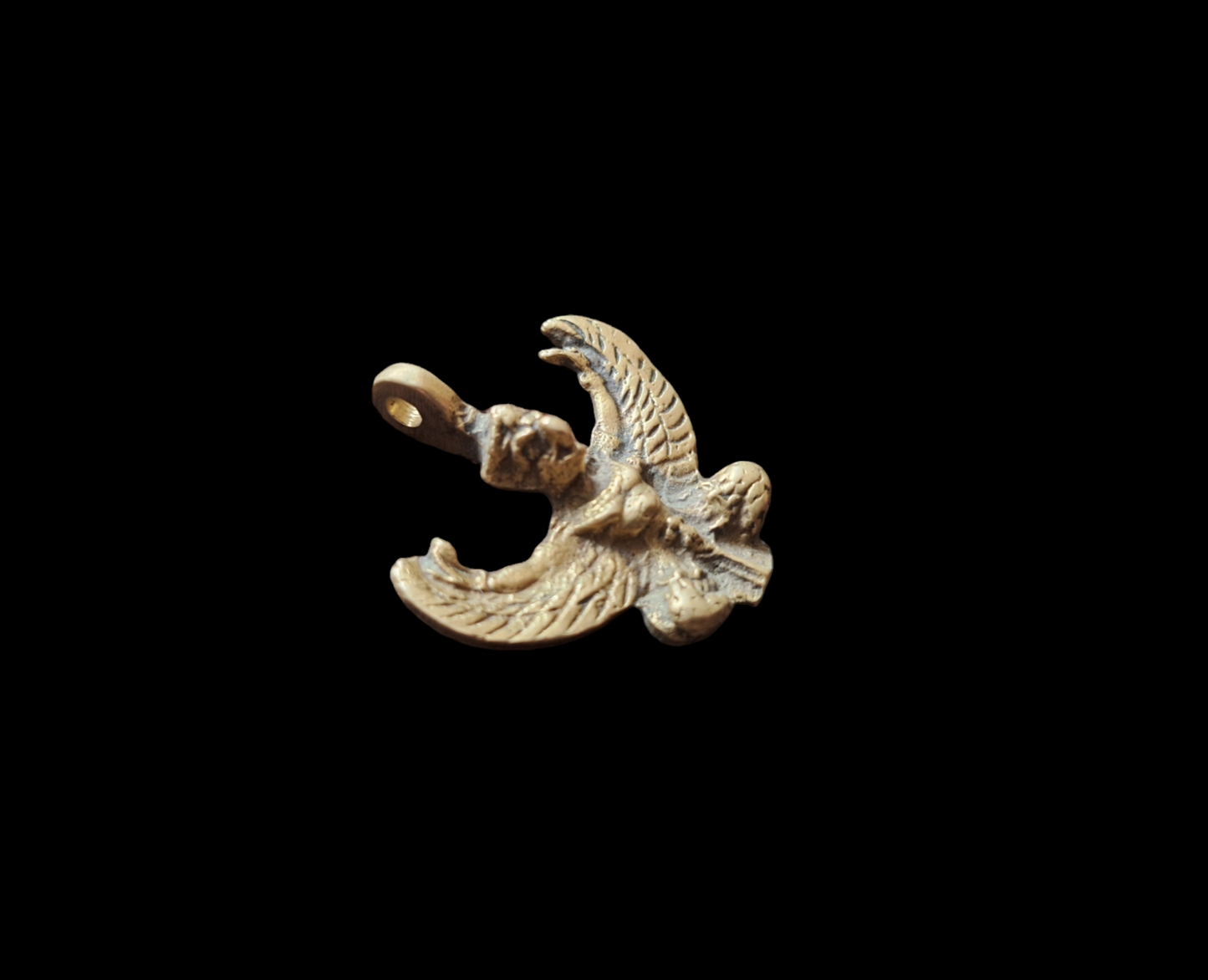Seawolf Shop
Vintage brass pendant Garuda
Vintage brass pendant Garuda
Couldn't load pickup availability
Share
Garuda is a deity and mythological creature known in Hinduism and Buddhism. His origin can be traced back to India, but from there his influence and importance has spread to China, Japan, South-East Asia, Tibet, Indonesia and Thailand. Naturally, over the different regions and traditions, the stories and highlighted aspects and dynamics of Garuda may vary a little, but they have also a lot in common.
Garuda is depicted as a creature half men - half eagle. As an eagle, he is king of all the birds. In Tibet he is called Khyung and associated with the 'bon khading', a golden horned eagle. He is said to have such enormous wings, that they are able to block the sunlight and their flapping makes the earth shake.
It is said that his body is surrounded by such a dazzling glow, that he was mistaken for (and thus worshipped as) the firegod Agni by the gods. Garuda is often depicted as the mount of the god Vishnu, but he is also an important god in itself.
In a lot of the traditional stories, Garuda is the arch-enemy of the naga's; snake- or dragon-like creatures with a very dual and often very dangerous nature. The 'bump' on top of his head, between his horns, conceals a jewel stolen from the serpent-king, which he obtained in Mount Meru. This jewel is believed to grant its possessor the power of having control over all snakes.
Also as a symbol of his dominance over the serpents, Garuda is often depicted with an adornment of the 'Eight Great Snakes' as ornaments on his body; one in his his hair, one as a belt or necklace, two as earrings, two as bracelets and two as anklets.
Some of his nicknames also refer to this dynamic of Garuda; 'nagantaka' (naga-killer), 'pannaganasana' (dragon-slayer), 'sarparati' (enemy of snakes).
It is this characteristic as devourer of the snakes, that made Garuda also find his way into some classical shamanic lineages, where he can be of assistance for (mostly black) shamans when doing heavy extraction work in healing rituals.
This Garuda pendant comes from Nepal and is made of brass. It is from vintage origin, so might therefore show some signs of age and previous usage. Size is approximately 35 millimeters high (including the eyelet) and 35 millimeters wide. It weighs 10 grams.
A unique piece, only one available.











